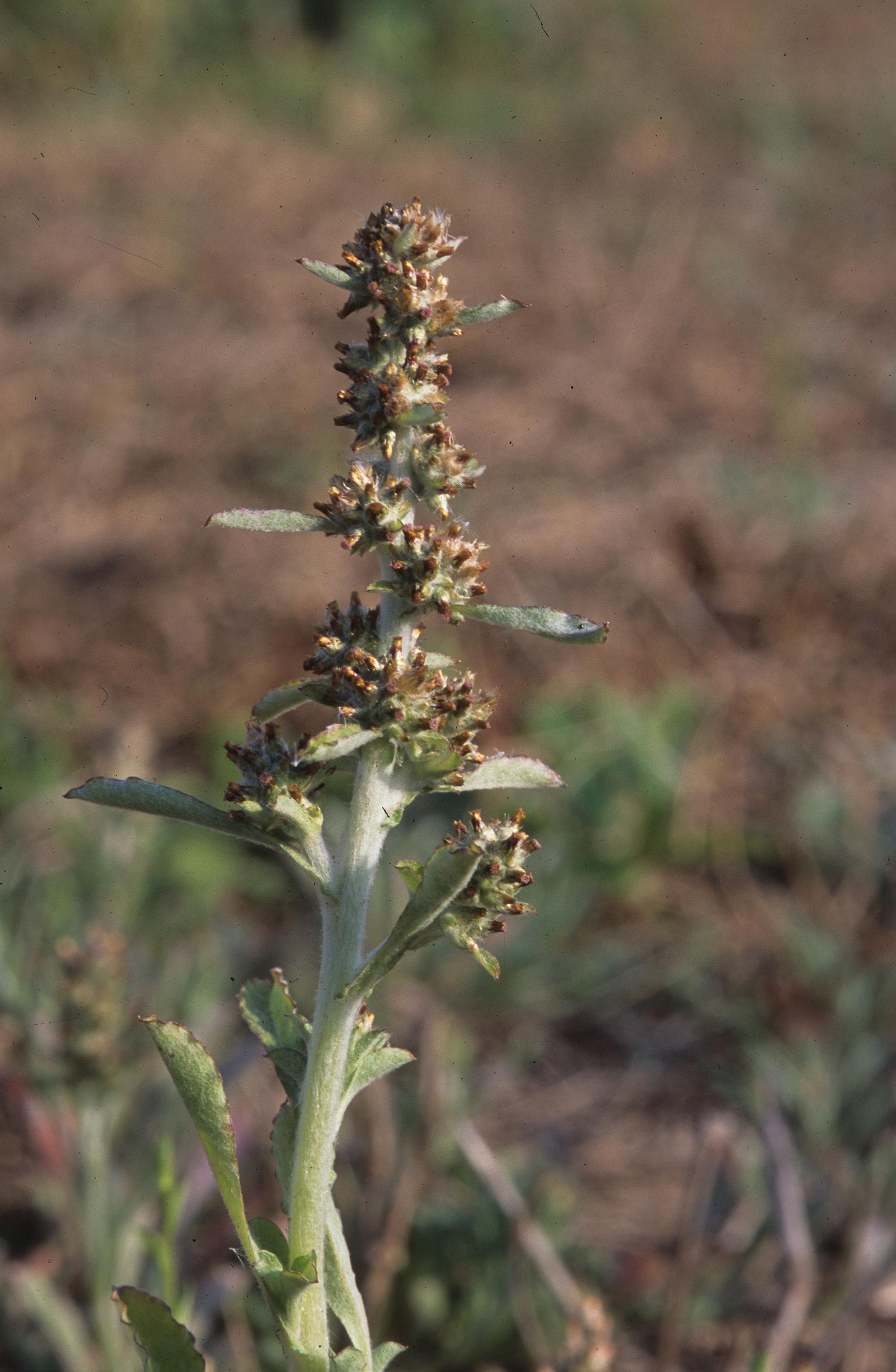Difference between revisions of "Gamochaeta coarctata"
Emmazeitler (talk | contribs) (→Distribution) |
|||
| Line 44: | Line 44: | ||
<!--===Diseases and parasites===--> | <!--===Diseases and parasites===--> | ||
| − | ==Conservation and | + | ==Conservation, cultivation, and restoration== |
| − | == | + | |
| + | ==Cultural use== | ||
==Photo Gallery== | ==Photo Gallery== | ||
<gallery widths=180px> | <gallery widths=180px> | ||
</gallery> | </gallery> | ||
==References and notes== | ==References and notes== | ||
Revision as of 15:17, 8 June 2021
| Gamochaeta coarctata | |
|---|---|

| |
| Photo was taken by Gil Nelson | |
| Scientific classification | |
| Kingdom: | Plantae |
| Division: | Magnoliophyta - Flowering plants |
| Class: | Magnoliopsida – Dicotyledons |
| Order: | Asterales |
| Family: | Asteraceae ⁄ Compositae |
| Genus: | Gamochaeta |
| Species: | G. coarctata |
| Binomial name | |
| Gamochaeta coarctata (Willd.) Kerguélen | |

| |
| Natural range of Gamochaeta coarctata from USDA NRCS Plants Database. | |
Common names: Gray everlasting; Elegant cudweed; American everlasting
Contents
Taxonomic notes
Synonyms: Gamochaeta americana (P. Miller) Weddell; Gnaphalium purpureum Linnaeus var. americanum (P. Miller) Klatt.[1]
Varieties: none.[1]
Description
A description of Gamochaeta coarctata is provided in The Flora of North America.
Distribution
This plant is a native of South America.[1]
Ecology
Habitat
This species has been found in open areas in and between shrubs, clearings of bottomland woodlands along rivers, and hillside bogs. It has been observed to grow shaded and partially shaded environments in dry and moist sandy loam.[2] This species also has been seen growing in human disturbed areas such as roadsides, vacant lots, swamp clearings, lawns, trails, golf courses, waste places, around houses and public buildings, and along fences. Associated species includes Soliva pterasperma, Oxalis dillenii, Parthenocissus quinquefolia, Veronica arvensis, Triodanis perfoliata, Dichondra carolinensis, Oplismenus setarius, Quercus, Carya, Pinus, and Sassafras. Also includes cabbage palm.[2]
Phenology
G. coarctata has been observed to flower from January to May as well in November with peak inflorescence in April.[3][2]
Conservation, cultivation, and restoration
Cultural use
Photo Gallery
References and notes
- ↑ 1.0 1.1 1.2 Weakley, A.S. 2015. Flora of the southern and mid-atlantic states. Working Draft of 21 May 2015. University of North Carolina at Chapel Hill, Chapel Hill, North Carolina.
- ↑ 2.0 2.1 2.2 Florida State University Robert K. Godfrey Herbarium database. URL: http://herbarium.bio.fsu.edu. Last accessed: June 2014. Collectors: Loran C. Anderson, R. K. Godfrey, R. Kral, C. Jackson, Jean Wooten, A. Gholson Jr., Richard S. Mitchell, Angela M. Reid, K. M. Robertson, T. MacClendon, and K. MacClendon. States and Counties: Florida: Escambia, Franklin, Gadsden, Holmes, Jackson, Jefferson, Leon, Liberty, Okaloosa, Wakulla, Walton, and Washington.
- ↑ Nelson, G. PanFlora: Plant data for the eastern United States with emphasis on the Southeastern Coastal Plains, Florida, and the Florida Panhandle. www.gilnelson.com/PanFlora/ Accessed: 9 DEC 2016